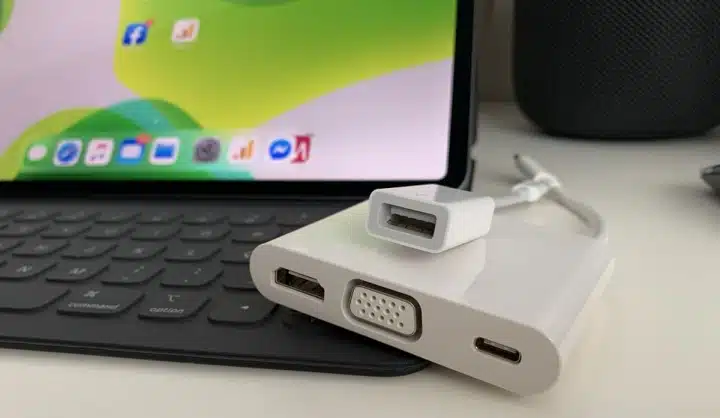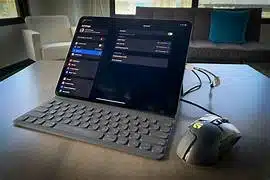Using a mouse on iPad Pro can make it feel less like a tablet and more like a laptop. It can also be more precise than using your finger.
Apple added mouse and trackpad support to iPad with its iOS 13.4 update last year. You can connect almost any Bluetooth mouse or Apple Magic Trackpad, and you can use them in wired mode.
Table of Contents
USB-C to USB-A adapter:
Apple’s latest iPad Pro models feature USB-C ports, which solve many of the problems associated with connecting external devices to older iPads.
You can connect a USB-C device directly to the iPad with a cable, or you can use a hub that connects to the iPad and provides additional ports.
The iPad Pro can also support high-resolution external displays via USB-C. This can be done using the included Apple USB-C Digital AV Multiport Adapter, which plugs into the USB-C port on the iPad Pro and adds an HDMI out, a passthrough USB-C port for charging, and a standard USB-A port. The adapter supports up to 4K video output at 60Hz.
You can also buy USB-C hubs that connect to the iPad Pro and provide additional ports, like the HyperDrive USB-C Hub for iPad, which comes with two USB-C ports (one for power), an SD card reader, a MicroSD card reader, a 35mm audio jack, and a Gigabit Ethernet port.
Anker offers a similar 7-in-1 hub that provides USB-C Power Delivery, 4K HDMI, 35mm audio, a 3.5mm headphone jack, and three USB 3.0 ports.
Lightning to USB adapter:
The iPad Pro has long been able to work with Bluetooth keyboards, but the lack of mouse support was holding it back from being a true laptop replacement.
Now that support is available, iPad Pro owners can finally use a mouse to control their tablet, and it’s much easier than you might think.
The easiest way to connect a USB mouse to an iPad is with a Lightning to USB adapter, which can be purchased for as little as $10 online.
Plug the adapter into a USB port on your iPad and then plug in your mouse or trackpad. Make sure that the device is in pairing mode, which typically involves pressing a dedicated button underneath until an LED flashes.
After the devices are paired, open the Settings app and tap Bluetooth listed on the left. From here, you can choose whether to turn on AssistiveTouch, which will display an onscreen pointer to allow you to click and move the cursor around your screen. You can also set the pointer size and color, as well as other options.
Lightning to USB-C How to Connect Mouse to iPad Pro 12.9:
The iPad Pro’s USB-C port supports a wide ecosystem of high-resolution external displays, including those that support the DisplayPort protocol.
Connect it to these displays using a USB-C cable that meets Apple’s standards, such as the one that comes with your display or this one from Kefiany.
The USB-C port on the iPad can also use to power some accessories, such as external storage devices and cameras.
It can also accept a higher-wattage USB-C power adapter (such as the one that came with your Mac laptop) for faster charging.
The inclusion of a USB-C port is especially useful on an iPad that doubles as a work tool because it opens up the possibility of connecting to enterprise-grade hardware like network-attached storage (NAS) and external displays that use HDMI or DisplayPort.
If enough consumers demand it, Apple will likely equip future iPhones with USB-C as well. That will enable accessory makers to stop supporting Lightning ports altogether, making their products cheaper and more universally compatible.

Mouse How to Connect Mouse to iPad Pro 12.9:
Many iPad users wish they could use a mouse. The ability to place a cursor with greater precision on the screen than with a fingertip is crucial for some types of work. Adding this capability is what some users need to turn their iPad into a replacement laptop.
Before iOS 13.4, the process of hooking up a mouse was clunky, requiring you to dive deep into the Accessibility menu. Now, the setup is simple and straightforward.
You can connect any Bluetooth mouse (as long as it supports the basic Bluetooth protocol) to your iPad.
You might be asked to enter a PIN when you pair your mouse. If so, enter 0000. You can disconnect a mouse device from your iPad by turning the switch on the mouse to Off or moving it and the iPad out of Bluetooth range. You can also disconnect the accessory from Settings > Bluetooth, select it, and tap Unpair.





Add comment